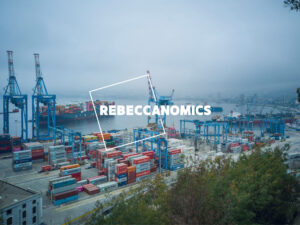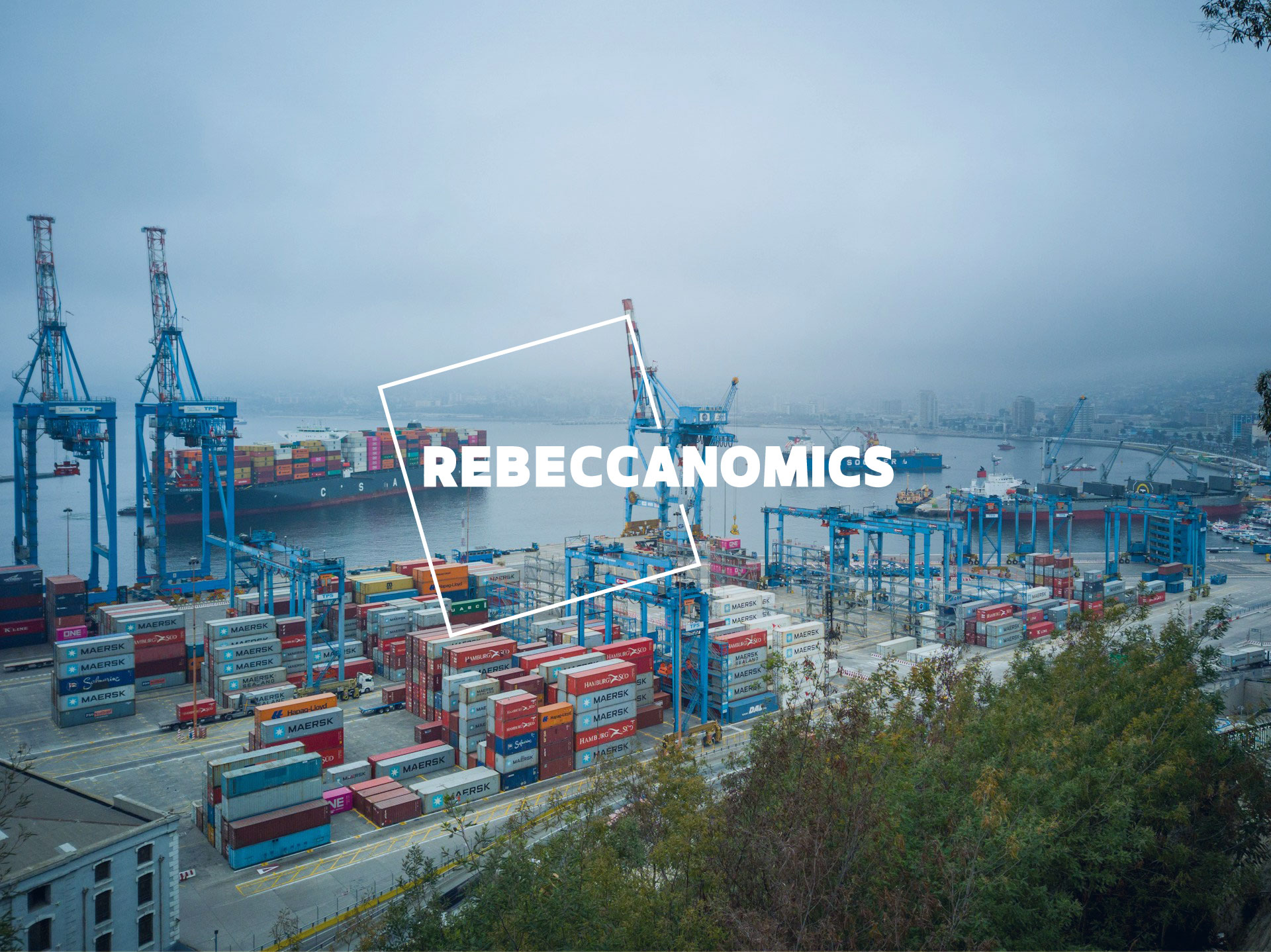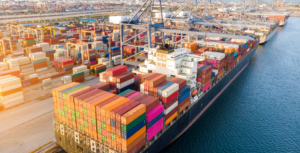
UK & DE Freight in 2024 and Beyond: A Supply Chain Logistics Case Study
Dive into the future of UK & DE freight: Adaptation, green logistics, and technological innovation shaping 2024 and beyond.

Freight is currently facing big political, economic and geopolitical challenges. In the UK alone, policy discussions on the sector’s future—particularly decarbonisation—are becoming more frequent, with the government’s Future of Freight plan released in 2022 forecasting the long-term development of the industry and the transition to ‘green’ freight. [1]
All of this comes amid the ongoing impact of inflation and a global economic downturn, in part due to the lingering effects of the pandemic but also more recent events, such as the Panama Canal disruption, the 2021 Suez Canal crisis, and the impact of the Ukraine War.[2] The freight sector is working overtime to reduce delays and prioritise customer satisfaction, attempting to get everything back into the right place as new challenges keep cropping up.
A recent report from Rebeccanomics, sponsored by Amazon Freight, “UK and DE Freight in 2025 and Beyond”, studies how macro and microeconomic trends are shaping the future of freight supply chains. Starting from data points taken from a survey of freight shippers and decision-makers across the UK and Europe, it analyses how the industry can respond to geopolitical factors, price pressures and the need to decarbonise the industry in the face of climate change. [3]
While it is essential to leverage new technology to tackle these problems, we must also understand the real extent to which new technology promises a solution. The report poses important questions about how tech will be adopted across the UK, EU and beyond, and reminds us of the strong need for collaboration between industry and government to properly implement innovative solutions.
Notwithstanding the fallout of COVID-19, the Russo-Ukrainian war has brought deep and lasting ramifications to global trade and supply chains. Between European and UK companies, shippers are now required to have new rules of origin and documents of trade.
Adding to this additional paperwork slowing down trade processes is the confusion created by the Northern Ireland Protocol, which only recently clarified freight rules in September 2023. [4] In an already difficult economic and geopolitical climate, regulatory complexity can feel like an additional burden that the freight sector needs support to manage.
But this isn’t the only story. One narrative which has received less attention compared to the economic impact of Russia’s invasion, Brexit and the lingering damage of the pandemic is China’s year of deflation—the first in two years. Between January and July 2023, the ‘total profits of industrial enterprises reported a year-on-year decrease of 15.5 per cent.’ [5]. J. P. Morgan points out that despite stimulus measures in place, the risk of deflation is ‘expected to persistent through the end of 2023’. [6]
Amid these conditions, the aforementioned report surveyed freight shippers and decision-makers working in large-scale logistics, and their top concerns are both unsurprising and surprising. Climate change and the regulations it brings (and will continue to bring as multiple industries worldwide move toward net-zero) captures the attention of many shippers. But so do driver shortages, which is not a new phenomenon but a legacy problem of the logistics industry.
In the wider economic context of instability and rising costs, it’s easy to understand that freight professionals’ focus remains where they can get more return on investment, since their working capital is being threatened or diminished. Even as AI continues to rear its head, the challenges of training and hiring persist. Small businesses will remain eager to hire and retain the right HGV drivers to offset other triggers of instability.
Speaking of technology, the report also notes that freight shippers have significant concerns about keeping up with innovations. The underlying reason for this is that legacy processes and heavy regulations are preventing efficient uptake. Many of the overarching systems used by the industry are still heavily manual, and in the face of complexity, this leads to inaccuracy. For example, at border crossings shippers often struggle to have the right paperwork, technologies, systems or barcodes to get them through in an easy way.
When freight is managing wider challenges, the temptation can be to just ‘botch through’ and get everything done. But this often simply delays the issues rather than solving them. The entire logistics system is in desperate need of unification and a ‘single window’ approach that allows better collaboration between technology, systems, shippers and countries.[7] Changes need to be made at a policy level to support this, and the benefits for freight would be significant.
Since these short-term obstacles arise from cost squeezes—and are taking place in a period of fertile technological advancement worldwide—it is tempting to view long-term investment into it as the key to transitioning to green logistics and avoiding supply chain bottlenecks.
Yet as much as it is talked up, tech is not a panacea for the industry’s multiple challenges. Cost squeezes put enormous pressure on businesses—especially on SMBs—to maintain growth and scale come-what-may. The industry has shown serious resilience in recent years, encountering the challenges created by this shifting geopolitical landscape. The question is whether this resilience can be maintained as we head into 2024 and beyond.
Technology and sustainability are the two watchwords when it comes to the evolution of logistics on a global scale. AI is weighing on the minds of decision makers in numerous sectors.
It is therefore encouraging to see a significant uptake of electric and hybrid vehicles within the freight industry in order to meet international environmental targets. This is only one part of the equation, however. The next step must be that, internationally, innovation within freight is enabled and supported by the right infrastructure.
McKinsey produced a report arguing the very same in 2022, pointing to not just the need for HGV charging ports: “Over the coming years, we expect to see a significant increase in the number of hydrogen-powered vehicles on the road … in the future, around 95 percent of demand by volume will come from commercial vehicles.” [8]
Meanwhile, shippers who are working hard to be more sustainable by adopting electric and hybrid vehicles can also support this movement by making a big noise to local governments about the need for increased investment into this infrastructure.
As mentioned, as we head into 2024 and beyond, climate change is at the top of the agenda. This is being driven by changing regulations, including the EU policy that by 2027 shipping companies need to surrender allowances for 100% of their reported emissions.[9]
Meanwhile, all EU countries have committed to reforming the carbon market by the same year and risk large fines if they fail to comply. Emissions—especially carbon—are being measured more deeply than ever, with some banks even starting to require that this is disclosed as part of a company’s onboarding process. Over the next few years this will see shippers investing into data collection and impact mitigation as they work hard to comply with new regulations.
Anything that is using interoperable services is going to help reduce emissions and cut costs. By looking at the whole value and supply chain (e.g. using electric vehicles and alternative fuels) you can build a system that makes all of freight’s footprint lower. Intermodal is part of that journey.
Using technology that enables easy collaboration between all parts of the supply chain (whether ports or freight partners) is essential to this, and so too is a digital trade model enabled by governments. Seaborne freight is leading the way here, where vessels using biofuels land at a port and can be connected with more efficient on-land vehicles. Intermodal can offer a competitive advantage and help save the planet, and will drive the most impact if it’s applied within a more collaborative, tech-enabled freight sector.
When it comes to technological investment, the key for freight decision-makers is to be purposeful. The EU’s customs union supports a high quality cross-border technology offering. The priority for freight companies within this is to choose the right technology that’s future-proof in a fast-moving landscape.
While AI solutions may seem exciting and come with many benefits, AI shouldn’t be implemented without considering what it’s needed for, how it’s going to be onboarded, what training is required alongside implementation, and so on. Creating a technology value chain is critical before investing in new innovations.
There’s also a crucial need for businesses and large companies in the freight sector to work with governments and banks on digital trade. If industry and public bodies can integrate these aims and companies adopt it quickly enough, the technology that emerges will make freight smoother and streamline processes.
Freight can help fast-track this by lobbying policy makers for better traction and speed of uptake on single windows and digital trade. If we can then implement technology that is consistent with this movement, we’ll be in a good position to manage our major future challenges.

Dive into the future of UK & DE freight: Adaptation, green logistics, and technological innovation shaping 2024 and beyond.

Join Dr. Rebecca Harding in a crucial discussion on sustainability in economics. Dive into why regulators must evolve GDP metrics to include sustainability for an accurate portrayal of our climate challenges and the journey towards actionable global solutions.

Explore the intricate relationship between trade fragmentation, geopolitics, and supply chain resilience with Dr. Rebecca Harding. Learn why understanding the political landscape is crucial to making economic sense and how strategic trade is shaping the 21st-century battleground.

Uncover the strategic necessity of Supply Chain Resilience in our latest piece by Dr. Rebecca Harding. Discover how today’s trade becomes a domain of warfare and why intelligence in supply chains forms the New Tradecraft in safeguarding national security.

Discover how biometric technology could revolutionize global trade, offering seamless and secure cross-border transactions by reducing inefficiencies at customs and immigration, with real-time tracking and smart contract integrations, promising a future of frictionless international commerce.

Decentralized finance innovations could eliminate inefficiencies and increase transparency across global supply chains. But what are the challenges to mainstream adoption?
Contact
Services
About
Insights
Rebecca’s Bio
Terms and conditions
Privacy